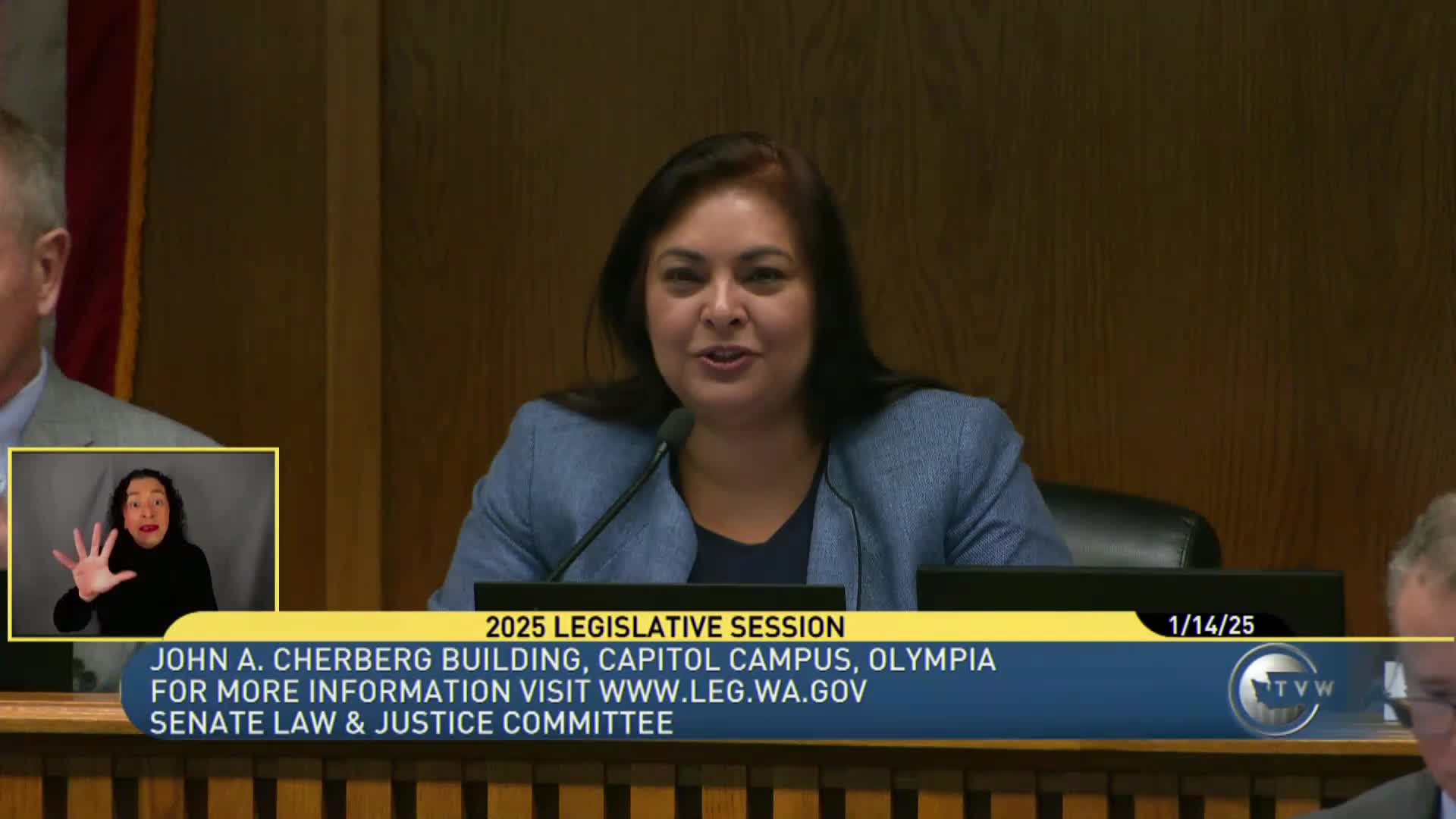Panel hears evidence and opposition to lowering per-se DUI limit to 0.05; no committee vote recorded
January 14, 2025 | Law & Justice, Senate, Legislative Sessions, Washington
This article was created by AI summarizing key points discussed. AI makes mistakes, so for full details and context, please refer to the video of the full meeting. Please report any errors so we can fix them. Report an error »

A proposed substitute to Senate Bill 5067 would lower Washington’s per-se blood alcohol concentration (BAC) limit for driving under the influence from 0.08 to 0.05. Staff counsel Joe McKittrick briefed the committee on the substitute, which also requires a public information campaign by the Washington Traffic Safety Commission and an evaluation by the Washington State Institute for Public Policy during the first three years of implementation.
Senator John Lovick, the bill’s prime sponsor, framed the measure as a community-safety intervention, drawing on decades of law-enforcement experience and saying “impairment starts with the first alcoholic beverage.” Law-enforcement witnesses and safety agencies supported the bill: Mark McKechnie of the Washington Traffic Safety Commission said a driver at 0.05 is “twice as likely to be involved in a crash compared to a sober driver,” Tom Chapman of the National Transportation Safety Board said lowering the per-se limit to 0.05 reduces fatal crashes and cited international precedent, and Dion Glover of the Washington State Patrol described training and enforcement priorities.
Public-health and safety organizations including the Department of Health, Mothers Against Drunk Driving and Advocates for Highway and Auto Safety testified in support, describing recent increases in traffic fatalities and the public-health toll of alcohol-impaired driving.
Opposition testimony came from the Washington Hospitality Association, Washington Wine Institute, Brewers Guild and other hospitality and beer/wine industry groups; they argued the change could penalize responsible consumers, pose operational challenges for servers to detect impairment at 0.05 and would not target the high-BAC repeat offenders responsible for the majority of fatal crashes. Criminal-defense groups urged consideration of a two-tier offense structure for lower BAC ranges.
The committee heard many witnesses on both sides; staff said a fiscal note had been requested. The transcript records public testimony but no committee vote during the hearing.
Senator John Lovick, the bill’s prime sponsor, framed the measure as a community-safety intervention, drawing on decades of law-enforcement experience and saying “impairment starts with the first alcoholic beverage.” Law-enforcement witnesses and safety agencies supported the bill: Mark McKechnie of the Washington Traffic Safety Commission said a driver at 0.05 is “twice as likely to be involved in a crash compared to a sober driver,” Tom Chapman of the National Transportation Safety Board said lowering the per-se limit to 0.05 reduces fatal crashes and cited international precedent, and Dion Glover of the Washington State Patrol described training and enforcement priorities.
Public-health and safety organizations including the Department of Health, Mothers Against Drunk Driving and Advocates for Highway and Auto Safety testified in support, describing recent increases in traffic fatalities and the public-health toll of alcohol-impaired driving.
Opposition testimony came from the Washington Hospitality Association, Washington Wine Institute, Brewers Guild and other hospitality and beer/wine industry groups; they argued the change could penalize responsible consumers, pose operational challenges for servers to detect impairment at 0.05 and would not target the high-BAC repeat offenders responsible for the majority of fatal crashes. Criminal-defense groups urged consideration of a two-tier offense structure for lower BAC ranges.
The committee heard many witnesses on both sides; staff said a fiscal note had been requested. The transcript records public testimony but no committee vote during the hearing.
View full meeting
This article is based on a recent meeting—watch the full video and explore the complete transcript for deeper insights into the discussion.
View full meeting
